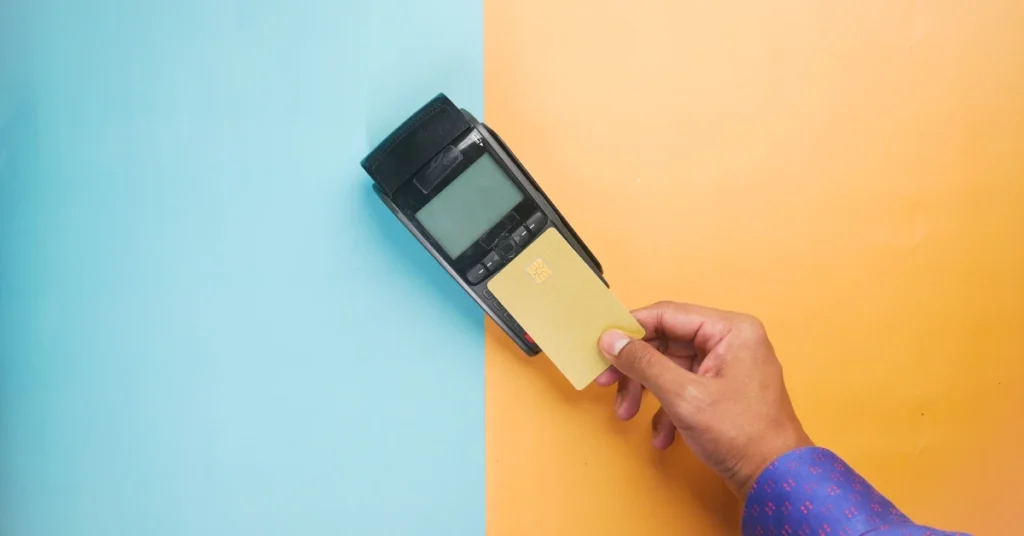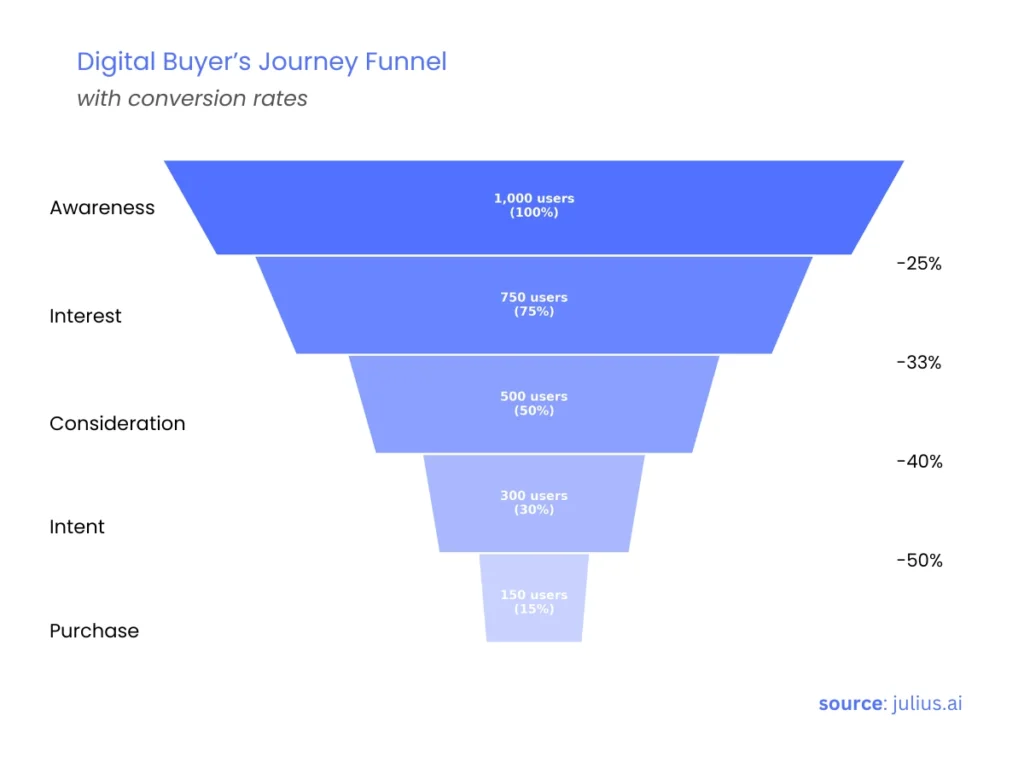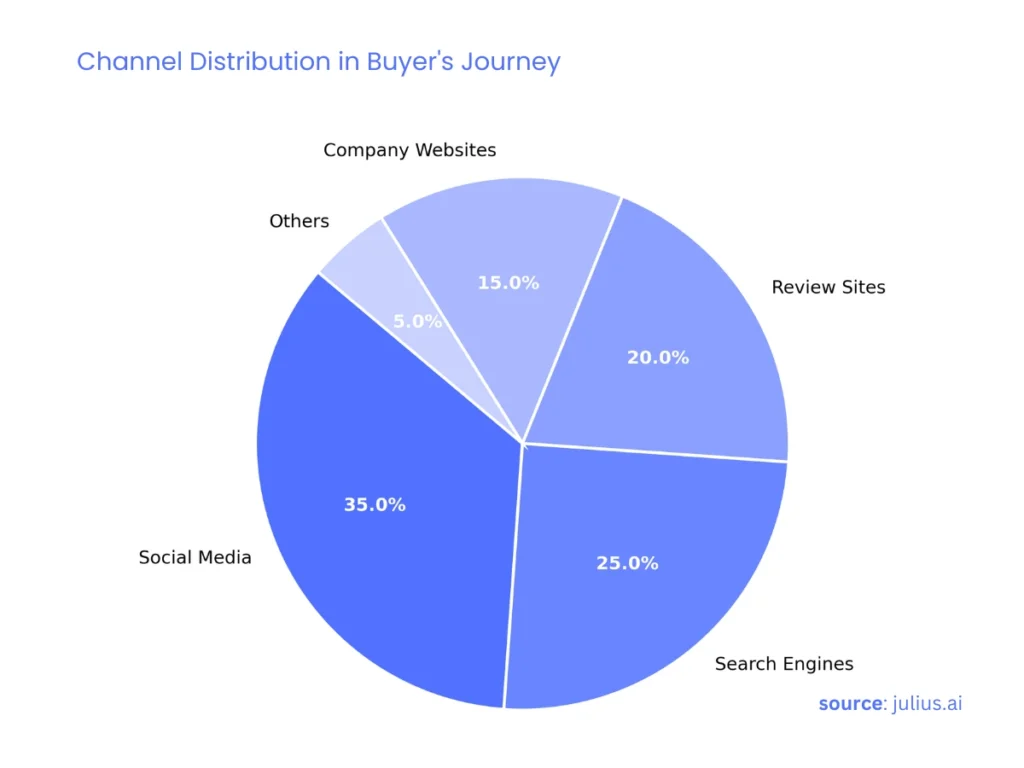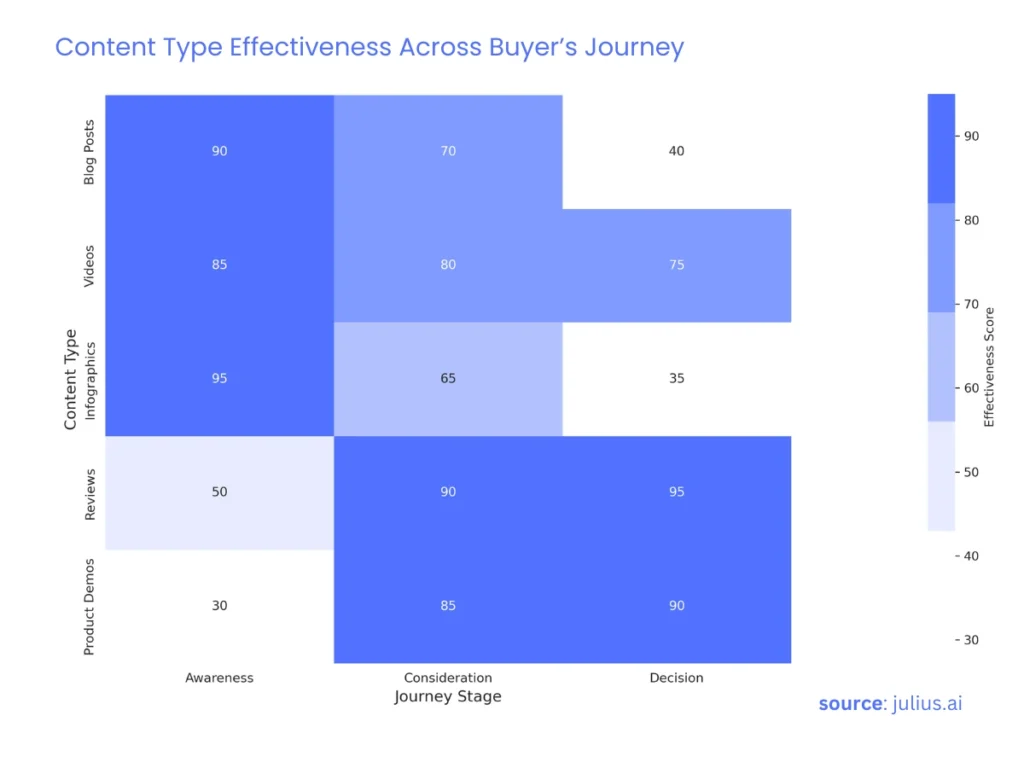How Much of the Buyer’s Journey is Digital

The way we shop has actually changed dramatically, and digital channels have much to do with that.
But to what degree of the buying journey is actually from online sources?
Well, today we have smartphones and access to the internet everywhere. Most of our buying process happens virtually.
Much of our prep work before buying takes place over digital channels – reading reviews, comparing, comparing products, and searching for the best deal.
The Digital Dominance in the Buyer’s Journey
For example, when an Indian consumer decides to buy a new car, many of them research online.
They check various models, read reviews from experts, and compare prices before they go to a showroom.
This phenomenon is not just limited to expensive purchases. In fact, most Indians make such decisions for day-to-day products on the digital platform.
Recognizing how an online space fits in the buyer’s journey makes companies devise strategies that can really meet the changing needs of their customers.
The Stages of the Buyer’s Journey and the Digital Touchpoints

Chances are you have at one point purchased something, large or small, following the buyer’s journey without knowing it.
It is just a natural course that we all undertake before a decision to purchase anything.
The buyer’s journey has traditionally meant going around to friends, asking someone in the shop, or approaching a salesperson.
These days, though, it’s pretty much all digital.
Let’s break it down into three simple stages and see how online platforms play a crucial role in each.
❇️ Awareness Stage: When the Search Begins
At this stage, the buyer realizes they have a need or a problem but isn’t sure what the best solution is. Naturally, the first instinct is to search online.
- A person experiencing frequent headaches might Google symptoms to understand why.
- A microenterprise owner who’s still not selling much may search on “how to get more customers online.”
- A person planning a wedding is scrolling through Instagram just looking for decoration ideas.
This is where businesses that blog, YouTube, and social media aid by providing informative, useful content (not advertisements) to help make a positive first impression.
❇️ Consideration Stage: Weighing the Options
The buyer now knows what they want, but they need to decide on the best available option.
The buyer begins comparing brands, reading reviews, and watching detailed videos.
For example:
- A buyer who wants to buy a fitness tracker will research YouTube reviews, Amazon ratings, and comparison blogs.
- A family planning a holiday will read travel blogs, YouTube vlogs, and booking websites to compare locations.
- A business seeking accounting software will browse comparison websites and case studies.
This would be the golden opportunity for such businesses to get their expertise projected through detailed guidebooks, reviews from customers as well as how-to comparisons presented side by side.
Such openness and helpful content will make more buyers feel better about a selection.
❇️ Decision Stage: The Final Push
The buyer is now ready to buy but requires one final nudge.
They may look for:
- Best deals and discounts
- Customer reviews to give them that final reassurance
- Easy payment and return policies
For example:
- A customer may wait for an Amazon sale before buying a laptop.
- A customer choosing between two salons may opt for the one that has better Google ratings.
- A business choosing a software subscription may look for a free trial.
This is how businesses should make the purchasing process easy by providing transparent pricing, promises, and effective after-sales support.
Regardless of what business you own, it lets you know which digital touchpoints reach the right customer at the right time with the right content.
Buyers more than ever now depend on search engines, reviews, and social media to decide on any matter.
If your business isn’t there at all these stages, you’re losing the customers who can potentially visit your business.
Practical Implications for Indian Businesses

By now, it is clear that a big chunk of the buyer’s journey happens online.
But what does this mean for your business? How can you use this information to attract more customers and increase sales?
Let’s break it down into four key strategies that Indian businesses can apply today.
❇️ Understand where your customers spend time online
Not all digital platforms work the same for every business. A restaurant and a software company won’t have the same online customer journey.
- If you have a local clothing store, then people are likely to come through Instagram or WhatsApp recommendations.
- If you are selling home appliances, then your customers will probably read reviews on Amazon and Flipkart before purchasing.
- If you offer B2B services, then your potential clients will most probably search on Google or visit LinkedIn.
What you can do: You can use Google Analytics and social media insights to check where your audience comes from and focus your marketing efforts on those platforms.
❇️ Develop content that aligns with each phase of the buyer’s journey
Think about how people are searching for your products or services.
Are they looking for information, comparing options, or ready to buy?
Here’s how you can align your content with their needs:
- Awareness Stage: Write helpful blogs and create short, engaging videos that introduce people to a problem and its solutions.
- Stage Consideration: Make available case studies, expert guides, and comparison posts to let the buyer choose.
- Decision: Highlight customer reviews, testimonials, and special offers to convince him or her to choose you.
What You Can Do: Construct a content calendar that ensures the three stages happen regularly.
❇️ Make Your Website and Social Media Mobile-friendly
In India, more than 75 percent of internet users access the web on mobile phones. If your website is not mobile-friendly, you are losing customers before they even get to know you.
- Your website should load fast, should be easy to navigate and should work smoothly on mobile devices.
- If orders are made over WhatsApp or Instagram, responses must be quick and professional.
- Keep your Google Business Profile updated so that local customers can easily find you.
What you can do: Test your website on mobile using Google’s Mobile-Friendly Test to optimize it for better performance.
❇️ Using Digital Marketing Tools
Knowing how much the buyer’s journey is digital, it is your time to use these digital marketing tools towards increased visibility and to grow sales.
- SEO helps promote your business high up in Google searches
- Social media ads enable you to target specific audiences based on their interests and location
- Retargeting ads remind website visitors about your products if they didn’t buy the first time
What You Can Do: Invest in basic SEO and social media marketing and outrun your competitors. Small steps today will make for a huge difference tomorrow.
Mapping Your Content to the Digital Buyer’s Journey

Now that we know how much of the buyer’s journey is digital, the next step is to create content that aligns with it.
Most Indian businesses go ahead and post random content without a plan in place.
However, if a structured approach is followed, you will be able to attract, engage, and convert more customers.
Here is how you can achieve it:
1️⃣ Who Is Your Target Audience? Whether your customers are new or long-term, first-time buyers, or experienced clients, and also if they have budget constraints or high-end options in mind: All this defines who your customer is and which content they truly require.
2️⃣ Align Your Content to the Buyer’s Stages
- Awareness Stage -Blog posts and short videos as well as infographics answering typical questions.
- Consideration Stage-Detailed guides on topics, comparison posts, reviews, and even expert interviews.
- Decision Stage → Customer reviews, special offers, and product demos.
3️⃣ Fill Content Gaps – Check your website and social media. Are you missing content for any of these stages? Prioritize middle and bottom-funnel content, as that’s where conversions happen.
In summary, while the exact percentage of the buyer’s journey that occurs online may vary, the trend is clear: digital channels are integral to the modern purchasing process.
Recognizing and adapting to this shift is crucial for businesses looking to connect effectively with today’s consumers.
Disclaimer: The information contained in this blog, The Growth File, is intended for general informational purposes only and does not constitute professional advice. Always consult with a qualified professional before making any business decisions based on the information you find on this blog.
What’s New?
-
13 Plastic Business Ideas to Start from Your Small Plant
Business Ideas -
Over 250 Indian Brands Tagline That Left a Mark
Marketing -
13 Dairy Business Ideas with Strong Demand
Business Ideas -
Effective Marketing for Local Businesses in FMCG
Marketing -
14 Steel Business Ideas in India for Small and Medium Enterprises
Business Ideas
